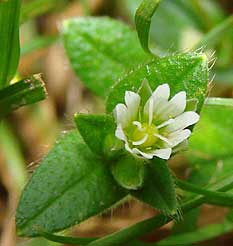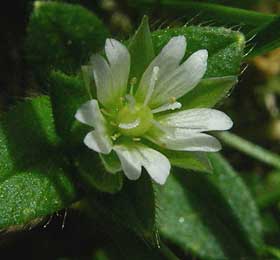Macro Photography of Plants with Consumer-level Digital CamerasComparison of close-up images obtained with DSLR/macro lens/ring flash with images obtained on Prosumer and Point & Shoot cameras.
David Patriquin, from presentation on Digital Plant Photography to Nova Scotia Wild Flora Society, Oct 22, 2007
High quality close-up images can be obtained with a DSLR/macro-lens/ring flash combination but those come at significant costs in two respects. First, finanical: a SLR camera + macro lens and ring flash can cost $2000 or well above that. Second: this equipment is heavy, large and awkward to handle.
On the other hand, most consumer level, non-SLR cameras can focus much closer (in macro mode) to the subjects without special lenses than can SLRs (with their standard lenses) and have greater depth of field than macro leneses because of the optical properties of smaller versus large sensors. Major benefits of the non-SLR cameras are their lower prices and lower weights and volumes, which makes them much easier than SLRs to carry on treks or just routinely, also, they are easier to steady without a tripod.
Optio W30: I can get closer to the subject than you, I have better depth of field, I'm a lot lighter and I'm cheap.
Nikon D70+macro lens: Yeah, but I've got bigger pixels and am better in low light!
So how much does one sacrifice in close-up quality to realize the benefits of lower price and greater convenience of the non-SLRs?
As a practical comparison, I took closeup shots of a small flower (Mouse-eared Chickweed, Cerastium vulgatum) in a lawn with each of three camera systems:The flower was approximately 5 millimeters in diameter. A small tripod was used to support the Nikon camera system, while the Sony and Pentax cameras were hand held. (I often use a tripod with those cameras, but in this situation it was very awkward to do so and lying on the lawn I could hold the lighter cameras very steady, not so with the much heavier SLR. There was no motion of the flower at the time, and there was overhead sun. Two versions were obtained with each camera system: (i) without flash, (ii) with flash.
- Nikon D-70 SLR + 90 mm macro lens + ring flash (6MP; weight: body 675 g, lens 450 g, ring flash 525 g, total 1650 grams)
- Sony DSC H5 Prosumer type camera (7MP; weight: 550 grams)
- Pentax Optio W30 Point and Shoot type camera (7MP; weight: 150 grams)
Images were minimally processed using Photoshop CS. The central part of each image, containing the flower, was cut out and retained in its original dimensions (large version); then it was reduced to 30% of original size with one UnSharp Mask applied (small version). The images were "Saved for the Web" at a Medium file size setting. Image statistics were obtained from the image metadata.
My conclusion: under the circumstances of this trial, there was very little improvement, if any, in the detail that could be discriminated an by using the SLR/Macro lens in comparison to the Point and Shoot type (Optio W30) and Prosumer (Sony DSC H5) cameras in macro mode and the depth of field was better with the non-DSLR cameras.






